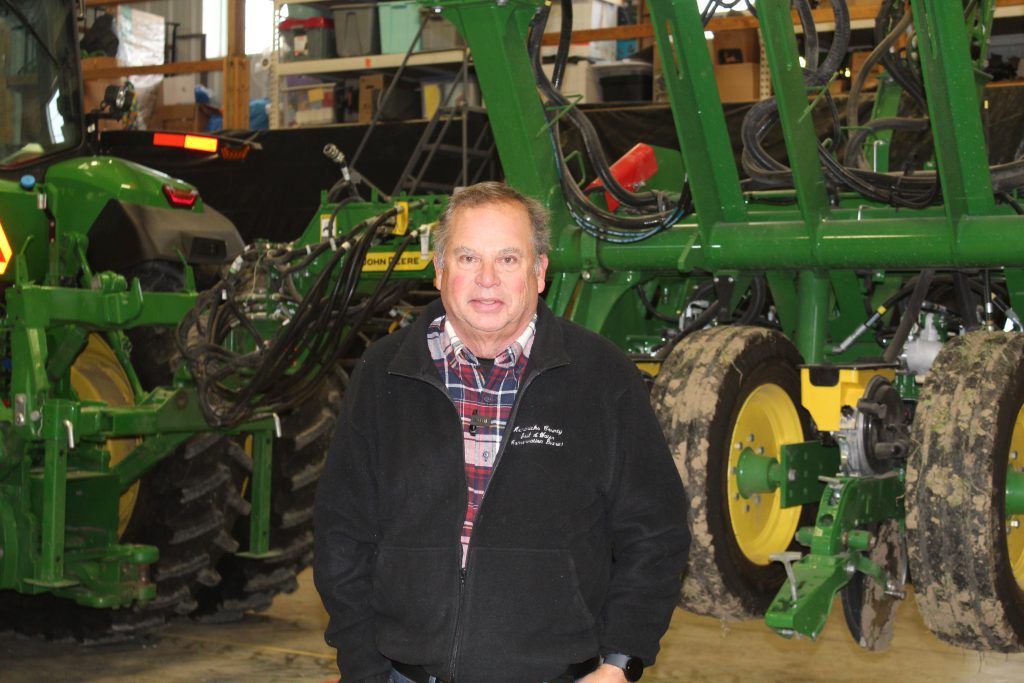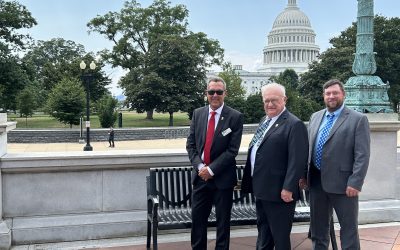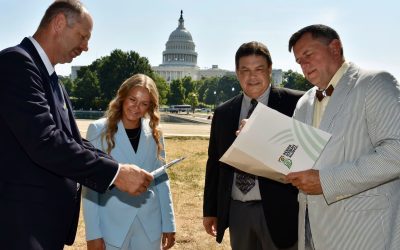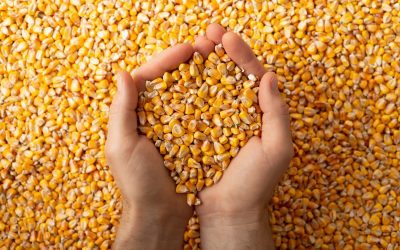Hoosier farmer sees benefits of no-till, cover crops and looks ahead to future
Posted: May 18, 2024
Category:
ICMC, Indiana Corn and Soybean Post - May 2024, ISA, News, Sustainability
By Amie Simpson
Mike Starkey, a farmer from Brownsburg, Ind., has seen the environmental and economic benefits of implementing conservation practices on his operation during the past 35 years. He began full-time farming in the mid-1980s when yields were plateauing and input costs were rising. Starkey started no-tilling soybeans in 1989 to increase his bottom line.
“I started with an old 750 no-till John Deere drill and noticed that it cut input costs of working the ground before soybeans and planting,” Starkey said. “We’ve no-tilled soybeans since then, because the return on investment was so much better than planting the conventional way.”

He explained it took more time to adopt no-till practices in corn. After no-tilling corn for three years in the mid-1990s and not seeing the same success in yields, he decided to go back to conventional corn planting. Advice from a peer and information from an annual conference helped Starkey finally adopt no-till in corn.
“I was spending so much money on equipment, fuel and fertilizer. It was just ridiculous; and instead of making money, I was losing money,” Starkey said. “I knew if I didn’t make a change to reduce inputs, I wasn’t going to be farming anymore. Someone I knew that was involved in no-till farming helped me set up my equipment and gave me an idea of how I could improve my way of planting no-till corn.
“The best mentoring I received on this topic was from the National No-Tillage Conference and other farmers. There’s a reason I’ve attended 26 of those conferences. I decided to try no-tilling corn again in 1999, and I haven’t turned back since. It’s been a great way of farming, because my yields have increased, and my input costs have dramatically dropped.”
Cover crops boosting soil health
Starkey began incorporating cover crops to improve soil health on his farm in 2005. He started with 20 acres of annual ryegrass. Today he uses various cover crop species annually on both corn and soybean fields. “The biggest lesson I’ve learned is that diversity is very critical in cover crops,” he said. “In other words, instead of just planting annual ryegrass, you need to have other species with that.”
A diverse set of cover crops can help build soil organic matter; increase soil water-holding capacity and water infiltration, and improve nutrient use efficiency.
Starkey added that farmers interested in incorporating cover crops should start small so the mistakes are equally small.
“You don’t just jump in with both feet and say I’m going to put cover crops on every acre,” he said. “You must gradually get into it. So, where do you start? There are cover crops that winterkill.
“Oats and radishes, for example, are simple ones to get started because you don’t have to worry about terminating them in the spring. For me personally, that doesn’t give me what I want. It benefits me more in the spring than it does in the wintertime. The huge benefit for me is when it wakes up in the spring, and it’s actively growing because it boosts biological activity in my soil. Cereal rye is another good place to start. It will need to be terminated in the spring, but I’m confident anyone interested in planting cover crops can start with cereal rye.”
Some cover crop species are harder than others to manage. Starkey has found success by following these rules: Don’t think about terminating the cover crop until you mow your yard twice and have three consecutive nights above 50 degrees. And, he said farmers using glyphosate should bring the water pH down to 4.0 or less.
Starkey also encourages farmers to contact their local soil and water conservation district for additional resources and potential cost-share dollars that will assist in implementing conservation practices.
Sharing information about conservation
Starkey Farms is a seventh-generation family farm just west of Indianapolis. He farms in a partnership with his nephew, Jeff. Jeff’s son and daughter, Zack and Maegan, and Mike’s son, Nick, work on the farm. Together they raise 3,000 acres of corn, soybeans and wheat as well as some beef cattle.
The operation is located across the road from a school and the largest parish in the Archdiocese of Indianapolis. Farming and implementing conservation practices in an urban area presents challenges and opportunities.
Starkey said he is transparent and shares information with neighbors about what practices are being implemented on the farm.

Indianapolis. Mike farms in partnership with his nephew, Jeff.
Together, with other family members, they raise 3,000 acres of
corn, soybeans, and wheat, as well as some beef cattle.
“We put signs along our fields saying cover crop is growing here, for example, to promote the type of farming that we do,” he said. “I let neighbors know the airplane that flies over our fields in the fall is dropping cover crop seed. I go into the classroom if I’m invited to talk to students about what I’m doing on the farm. One of the first things they ask is if I’m dropping chemicals or pesticides; and when I tell them it’s cover crops, they’re excited. Some of them go home and tell their mom and dad, and then I get texts or phone calls from people I know saying, ‘Hey, I didn’t know that’s what you were doing. I’m going to open my windows again when that airplane is flying around here.’”
The location also requires some extra planning around moving equipment, but Starkey said he can’t imagine farming anywhere else.
Leaning on others and looking forward
The Hendricks County farmer shares some of the biggest lessons he’s learned while adopting conservation practices: Find a core group of farmers to learn from; be willing to change; learn from your successes and failures; have the mindset it’s going to work; and be innovative when possible.
Starkey has a peer group of about 20 farmers to learn from and share ideas.
“It’s the best way to improve your farming and learn what works and doesn’t work because the other farmers have actually been on this tractor, for example, or used this conservation practice,” he said. “It’s fun to learn from each other and get together.”
Starkey said being open to change has helped through the years while trying different practices on his farm. As he looks to the future, he is open to considering innovative practices and technologies coming down the pike.
“I’m always looking for that new paradigm of no-till farming. Cover crops are a big deal, but they’ve been around for 20-plus years,” he said. “One of these days we’re going to have some practice that’s going to be even more innovative than cover crops, and I think technology is the next place we’ll see a shift in learning how to be a better no-till farmer.”
And, Starkey added with a smile, being willing to implement new practices makes farming fun.



